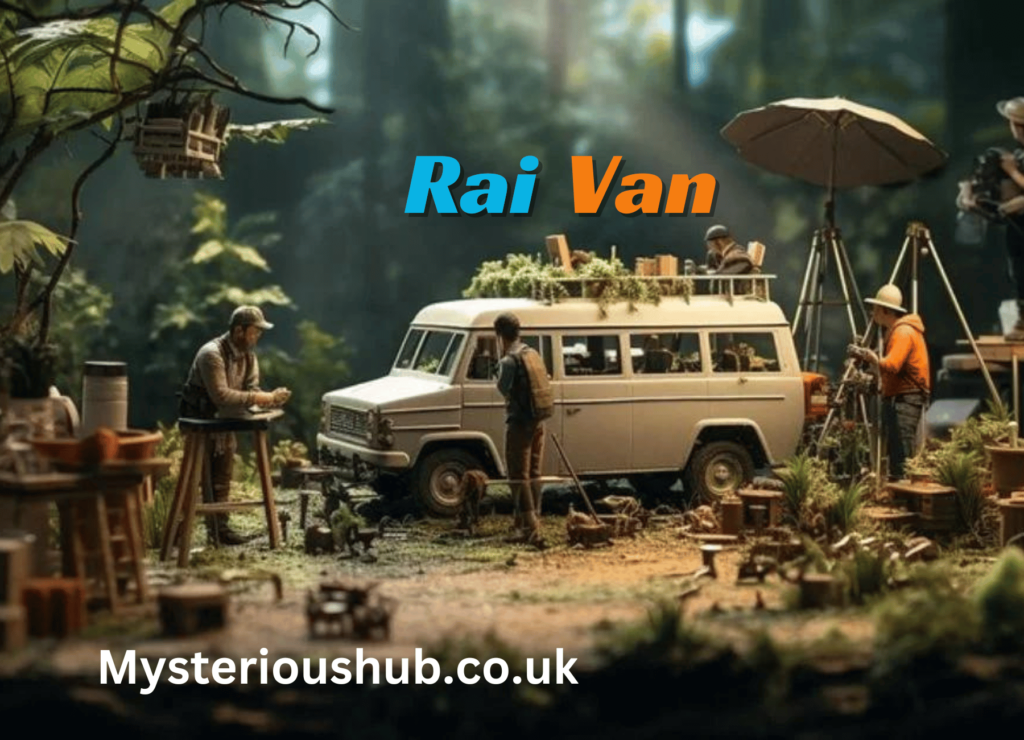The intriguing Rai Van, a beast that lives in the woods, has captured the attention of many people. This article delves further into its existence, investigating its background, traits, environment, and role in nature.
Origins and History
The roots of Rai Van hint lower back to ancient legends and folklore, wherein it become revered as a image of wisdom and harmony with nature. Over the centuries, its life has been shrouded in mystery, with sporadic sightings and encounters adding to its mystique.
Appearance
Rai Van is described as an impressive creature with glossy fur and piercing eyes that seem to keep historic secrets. Its elongated frame and swish moves evoke a experience of awe and reverence amongst the ones fortunate sufficient to trap a glimpse.
Behavior
Known for its elusive nature, Rai Van is a solitary creature that roams the dense forests with stealth and agility. Its eager senses and intuitive instincts make it a master of its environment, mixing seamlessly into the shadows of the desert.
Habitat and Distribution
Rai Van inhabits far off and pristine ecosystems, preferring dense forests and mountainous regions wherein it is able to find sufficient cover and seclusion. It most effective happens in a few locations, often in regions with untouched wilderness and a rich biodiversity.
Diet and Feeding Habits
As a carnivorous predator, Ra’i Van preys on smaller mammals and birds, using its pace and agility to seek with precision. Its food regimen consists on the whole of small rodents, reptiles, and sometimes larger prey, depending on availability.
Reproduction and Lifecycle
The reproductive cycle of Rai Van is shrouded in mystery, with limited medical documentation on its mating rituals and breeding conduct. It is thought to observe a similar lifecycle to different predators in its ecosystem, with offspring being raised in hidden dens deep within the forest.
Conservation Status
Despite its cultural significance and ecological importance, Rai Van faces numerous threats to its survival, such as habitat loss, poaching, and human encroachment. As a result, it is classified as a species of conservation problem, requiring urgent action to protect its dwindling populations.
Threats and Challenges
The greatest threats to Rai Van stem from human sports, such as deforestation, illegal looking, and habitat fragmentation. Climate alternate additionally poses a full-size risk, changing the delicate balance of its herbal habitat and threatening its long-term viability.
Conservation Efforts
Efforts to preserve Rai Van are underway, with projects targeted on habitat preservation, community engagement, and studies to higher understand its ecological desires. Conservation agencies and government groups are operating together to put into effect strategies aimed toward safeguarding its destiny.
Importance in Ecosystem
As a top predator, Rai Van plays a crucial role in maintaining the fitness and balance of its environment. By regulating prey populations and controlling herbivore numbers, it facilitates keep the integrity of the herbal habitat and guarantees the survival of other species within its meals web.
Interaction with Humans
Ra’i Van has lengthy been respected in nearby folklore and traditions, serving as a symbol of wilderness and untamed splendor. However, human activities pose a hazard to its existence, main to conflicts over territory and resources as human populations expand into its habitat.
Rai Van in Culture and Folklore
Across diverse cultures and indigenous groups, Ra’i Van holds a special region in folklore and mythology, regularly depicted as a guardian spirit or mythical creature with supernatural powers. Its presence is woven into the cloth of local traditions, inspiring reverence and recognize for the herbal global.
Interesting Facts
Ra’i Van is thought by special names in diverse cultures, each reflecting its particular characteristics and significance.
Natural world fanatics and researchers have on occasion captured Ra’i Van on digital camera, despite its elusive nature.
The specific population length of Ra’i Van stays unknown. Ading to its mystique and appeal in the eyes of conservationists and natural world lovers alike.
Conclusion
For all its majesty and intricacy, the natural global is a source of awe and mystery. And Rai Van is a symbol of both. While we paintings to hold its herbal habitat and guarantee its endured existence. Let us additionally take into account to be type and respectful to all other kinds of life on Earth.
FAQs
Is Rai Van a actual animal?
- Yes, Ra’i Van is a actual creature, despite the fact that its life is regularly shrouded in mystery and myth.
Where can Rai Van be discovered?
- In far-flung and pristine desert regions, with dense forests and mountainous terrain, Ra’i Van is typically found.
Why is Rai Van important?
- Ra’i Van plays a crucial function in preserving the balance of its ecosystem as a top predator, assisting modify prey populations and preserve biodiversity.
Is Rai Van endangered?
- While now not officially classified as endangered, Ra’i Van faces threats from habitat loss, poaching, and human encroachment, making conservation efforts crucial for its survival.
Can Rai Van be domesticated?
- I wasn’t always able to domesticate Ra’i Van due to its elusive nature and specialized habitat requirements. The ball was left undisturbed in its natural environment.
Related topic:


